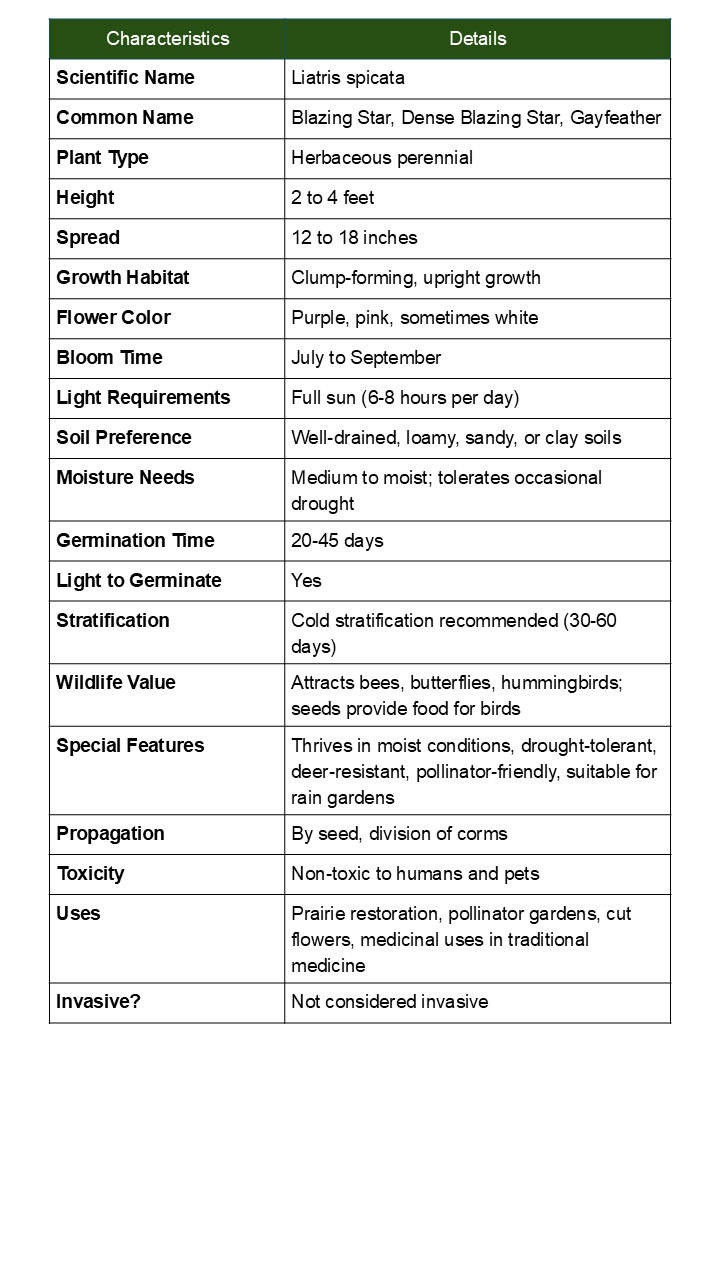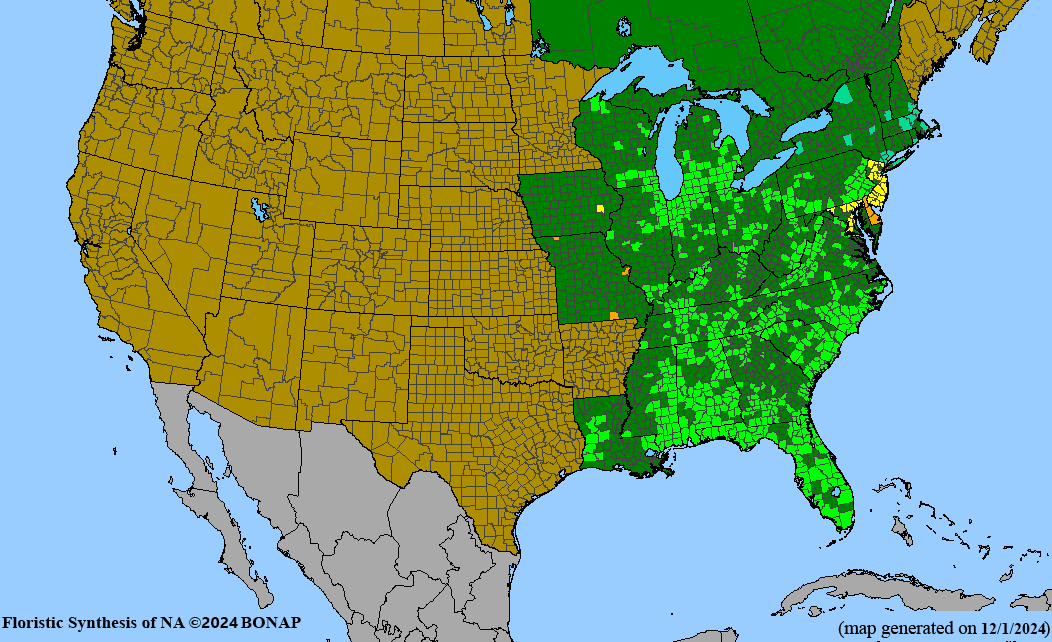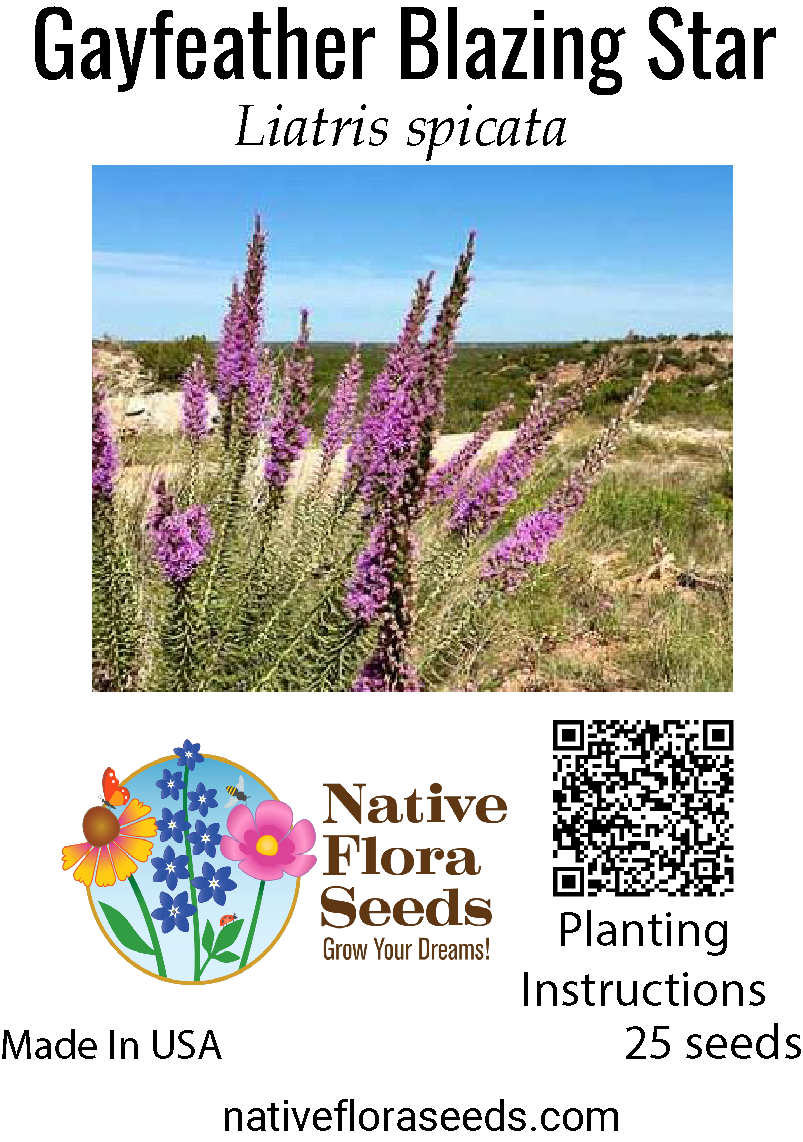Gayfeather Blazing Star Seeds - Liatris Spicata Native Purple Wildflower
Regular price$4.00
/
Tax included.
1 review
Create Spectacular Garden Drama with Native Gayfeather Blazing Star
Transform your landscape with the magnificent Gayfeather Blazing Star (Liatris spicata), one of North America's most beloved native wildflowers. These stunning perennials produce towering spikes of vibrant purple flowers that create breathtaking vertical drama in any garden setting.
Why Choose Gayfeather Blazing Star?
- Pollinator Paradise: Irresistible to butterflies, bees, and hummingbirds - a true wildlife magnet
- Drought Champion: Thrives with minimal water once established, perfect for sustainable gardening
- Extended Blooms: Spectacular flower display from mid-summer through early fall
- Cut Flower Excellence: Outstanding for fresh bouquets and dried arrangements
- Deer Resistant: Natural protection from browsing wildlife
- Easy Care: Low-maintenance perennial that naturalizes beautifully
Plant Specifications
- Height: 2-4 feet tall with impressive flower spikes
- Bloom Time: Mid-summer to early fall
- Flower Color: Rich purple-pink in dense, bottlebrush spikes
- Hardiness: Perennial in zones 3-9
- Soil: Well-draining, tolerates poor and sandy soils
- Growth Habit: Forms attractive clumps that expand over time
Perfect for prairie gardens, pollinator habitats, cut flower gardens, and creating stunning vertical accents that celebrate America's native flora while supporting beneficial wildlife and sustainable gardening practices.
FREE SHIPPING WITHIN USA



